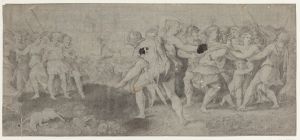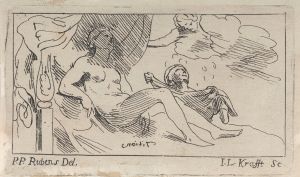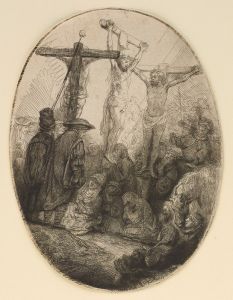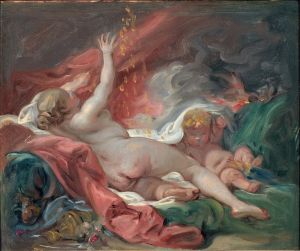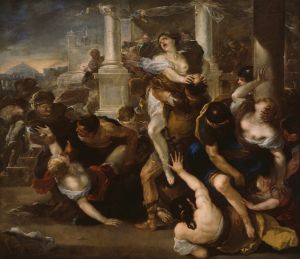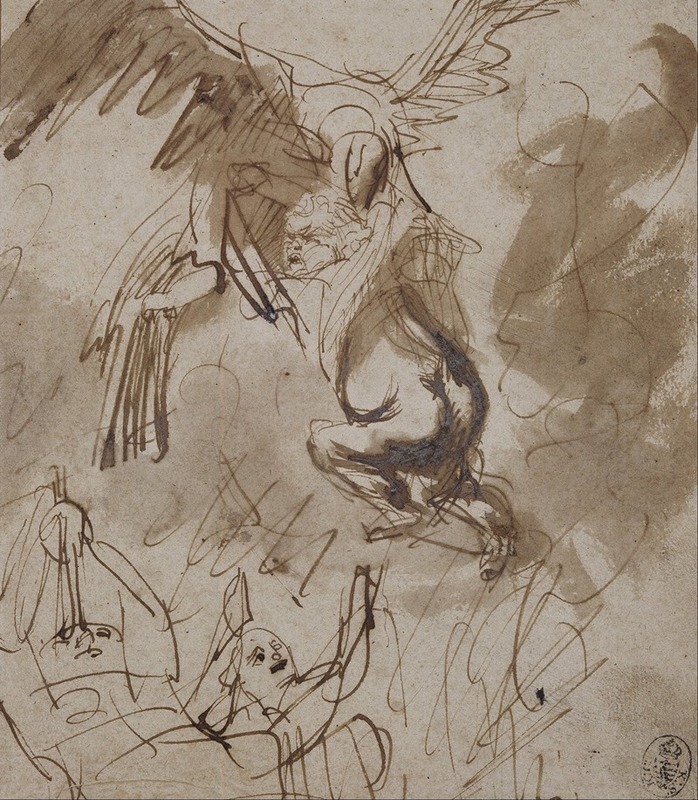
Study for The Abduction of Ganymede
A hand-painted replica of Rembrandt van Rijn’s masterpiece Study for The Abduction of Ganymede, meticulously crafted by professional artists to capture the true essence of the original. Each piece is created with museum-quality canvas and rare mineral pigments, carefully painted by experienced artists with delicate brushstrokes and rich, layered colors to perfectly recreate the texture of the original artwork. Unlike machine-printed reproductions, this hand-painted version brings the painting to life, infused with the artist’s emotions and skill in every stroke. Whether for personal collection or home decoration, it instantly elevates the artistic atmosphere of any space.
"Study for The Abduction of Ganymede" by Rembrandt van Rijn is a drawing that reflects the artist's exploration of mythological themes, a subject that intrigued many artists of the Baroque period. Rembrandt, a Dutch master renowned for his innovative use of light and shadow, as well as his keen ability to capture human emotion, created this study as part of his broader engagement with classical mythology.
The drawing is a preparatory study for a painting that Rembrandt completed in 1635, titled "The Abduction of Ganymede." The myth of Ganymede originates from ancient Greek mythology and tells the story of a beautiful young boy, Ganymede, who was abducted by Zeus. In the myth, Zeus, enamored by Ganymede's beauty, transforms into an eagle and carries him off to Mount Olympus to serve as the cupbearer to the gods.
Rembrandt's study captures the dramatic moment of Ganymede's abduction. The drawing likely served as a preliminary exploration of composition, form, and emotional expression, which Rembrandt would later refine in the final painting. In the study, the artist focuses on the dynamic interaction between Ganymede and the eagle, emphasizing the tension and movement inherent in the scene. Rembrandt's use of line and shading in the drawing demonstrates his skill in conveying texture and volume, even in preparatory works.
The study is notable for its departure from traditional depictions of the myth. While many artists portrayed Ganymede as an idealized, passive figure, Rembrandt's interpretation is more grounded and human. In the final painting, Ganymede is depicted as a frightened, crying child, adding a layer of realism and emotional depth to the mythological narrative. This approach reflects Rembrandt's interest in the human condition and his ability to infuse classical subjects with a sense of immediacy and relatability.
Rembrandt's choice to depict Ganymede as a child rather than a young man also highlights his unique perspective on the myth. This interpretation may have been influenced by the artist's personal experiences or cultural context, though such motivations remain speculative. What is clear, however, is that Rembrandt's rendering of the myth challenges viewers to reconsider the story from a new angle, emphasizing vulnerability and innocence.
The study, like many of Rembrandt's works, showcases his mastery of drawing as a medium. His ability to convey complex emotions and narratives through simple lines and shading is evident in this piece. The drawing also provides insight into Rembrandt's creative process, illustrating how he developed his ideas and compositions before committing them to canvas.
"Study for The Abduction of Ganymede" is housed in a collection that preserves Rembrandt's legacy as one of the most influential artists of the Dutch Golden Age. His works continue to be studied and admired for their technical brilliance and emotional depth, and this study is a testament to his enduring impact on the art world.






